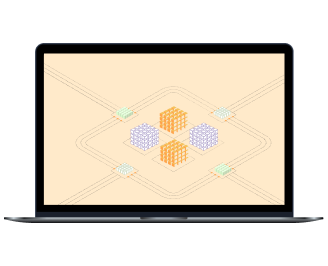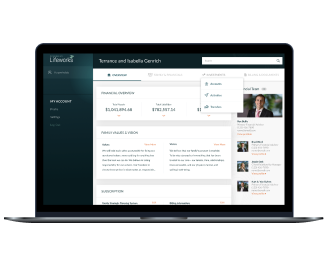Refining the documentation repository for a premium food manufacturer
Learn how we assisted our client in improving baseline infrastructure visibility, facilitating knowledge exchange between departments, and minimizing unauthorized access to sensitive data by creating a centralized IT Body of Knowledge (ITBoK). You’ll find out how having a centralized repository for all IT-related practices, expertise, and knowledge will assist our client in change management and facilitate geographic expansion.
-
Industry
Food & Beverage
-
Country
USA & Europe
-
Team size
4 IT experts
-
Period of collaboration
July 2023 – September 2023
Value delivered within this project
While we continue collaborating with our client and refining the business methodology, we’ve already accomplished the following:
-
Performed a thorough documentation review and introduced an architecture repository based on TOGAF and IIBA approaches
-
Created a centralized architecture repository, where we documented all essential processes and set the stage for smooth knowledge exchange
-
Assisted in streamlining onboarding and product support processes by documenting the workflow and appointing a person responsible for change management
-
Established a baseline for building a data warehouse and facilitating digital transformation with improved query management, consolidating data into clusters, and updating company infrastructure
About the client
Our client is a well-established food producer specializing in meat processing and distribution, custom packaging development, and private label food manufacturing for famous brands. The company mainly operates in the US and Western Europe and exports its goods all over the world.

Business context
Prior to collaborating with Yalantis, the client already had many SaaS and self-hosted systems within their infrastructure that were not integrated with each other. This created several major issues:
- Lack of integration between systems led to data silos and, combined with the absence of appointed stakeholders on each organizational level, made access to information difficult.
- Factors like unfinished change management impacted the way documentation was stored and updated, which resulted in different departments having a completely different picture of internal processes.
- Decentralized data storage didn’t allow our client to see their IT landscape, making it difficult to identify vulnerabilities, inefficiencies, or opportunities for improvement.
- The inability to monitor and manage access control across various systems increased the risk of unauthorized access and made the system vulnerable to data leaks.
Our client requested expert assistance in developing a centralized repository that will store all documentation for internal processes, expertise, operational workflows, and other important artifacts at each organizational level. Their main objective was to create a transparent documentation hierarchy that’s easy to change, expand, and control.
Solution overview
-
Our team has collaborated with the client to consolidate all data within a centralized architecture repository and ensure its ongoing monitoring and change management.

Our approach to the task consisted of the following steps:
- Documenting baseline business architecture and drawing a network diagram to figure out the high-, medium-, and low-priority segments of documentation
- Documenting workflows for high-priority customer data, such as inventory metrics, financial operations, and data for auditors
- Collaborating with the client’s technology team and training them for the updated process of documenting essential data, defining stakeholders for each data stream, and implementing change management
- Creating the document structure and hierarchy for a repository
- Examining the updated documentation, ensuring its ongoing support and monitoring, and appointing a person responsible for its approval
-
Auditing existing IT infrastructure
Throughout the discovery phase, our data engineers performed a thorough assessment of existing IT infrastructure, which allowed us to:
- identify areas of potential improvement: knowledge gaps, outdated documents and processes, technology issues
- analyze ways in which current IT infrastructure can impact business efficiency, scalability, and meeting compliance requirements
- outline the roadmap to establishing a centralized repository and collecting all valuable documentation within it
-
Appointing stakeholders for documentation management
Once our technology team performed the audit and identified areas for improvement, our business analysts gave recommendations for appointing stakeholders on the client’s side for each document and data stream. We also updated permissions for sensitive company data based on an individual’s level and scope of responsibilities within the organization. Taking these steps allowed us to:
- decrease the chances of important documents being lost or altered
- lower the risk of sensitive information leaks by introducing permission management
- improve documentation quality by having each asset reviewed by an expert and generating only valuable documents for the knowledge base
- streamline support and the onboarding flow by having all processes documented, stored in a ready-to-use repository, and available on demand
- use the benefits of role-based access control (RBAC) to create varying reports for users accessing the repository based on their organizational level and scope of responsibilities
-
Establishing a solution framework within the baseline data architecture
In parallel with advising on appointing stakeholders, we examined the client’s current data architecture and added it to a solution framework, also known as a solution continuum. It will facilitate our client’s transformation in the data architecture area. Here’s how we approached this:
- Documented all services our client used into a service catalog, which helped identify critical and non-critical segments of the baseline data architecture and outline the scope of work
- Defined stakeholders and end users for each documentation stream in the system
- Provided our client with a list of solutions to help them transition to a centralized repository
Having an established solution continuum will help our client’s data team manage documentation smoothly and have defined processes for each data stream.
-
Documenting the updated architecture and managing permissions
Once we streamlined data workflows and documentation, we described the updated processes and provided the client with enhanced permission management, focusing on:
- sources of data
- a detailed description of the data retrieval process
- who has permissions to see, change, and manage data
By implementing and updating permission management, we aligned the client’s business architecture with the intention to follow the Integrated Information Infrastructure Reference Model (III-RM). This improved operational visibility on every level and allowed our client to align their IT landscape with business objectives.
-
Exchanging knowledge and initiating personnel training
At this stage, our team conducted knowledge exchange sessions with knowledge holders on the client’s side: the CEO, CTO, BA, and team leads. Obtained knowledge was documented and integrated into the repository, which allowed us to create a comprehensive library of best practices, workflows, and internal processes and close remaining knowledge gaps.
Along with that, we established an onboarding workflow for current and new employees to encourage them to share new information.
-
Providing ongoing support and documentation management
We established and documented a change management workflow that applies to any process structure or business logic updates. Any changes in code are recorded in the Git repository. This allows us to control system versioning or roll back code if low-quality data has been entered on the client’s side.
Along with that, we defined stakeholders — team leads, business analysts, and CTOs — who support the current formula for each process. If they decide to change the logic behind a process, we get notified and assign the data management team a task to update documentation.
Struggling with scaling your data architecture while maintaining transparent and secure documentation?
Yalantis is adept at overhauling outdated data systems and creating centralized, scalable, and transparent data architectures that can adapt to your company’s growth.
More projects
-

Microservices architecture for a logistics company
A scalable and flexible solution that improves change management and reduces system latency
-

Data lake for a manufacturing company
A solution for improving business visibility and operational performance
-

Lifeworks Advisors
Legacy system modernization for a wealth management platform